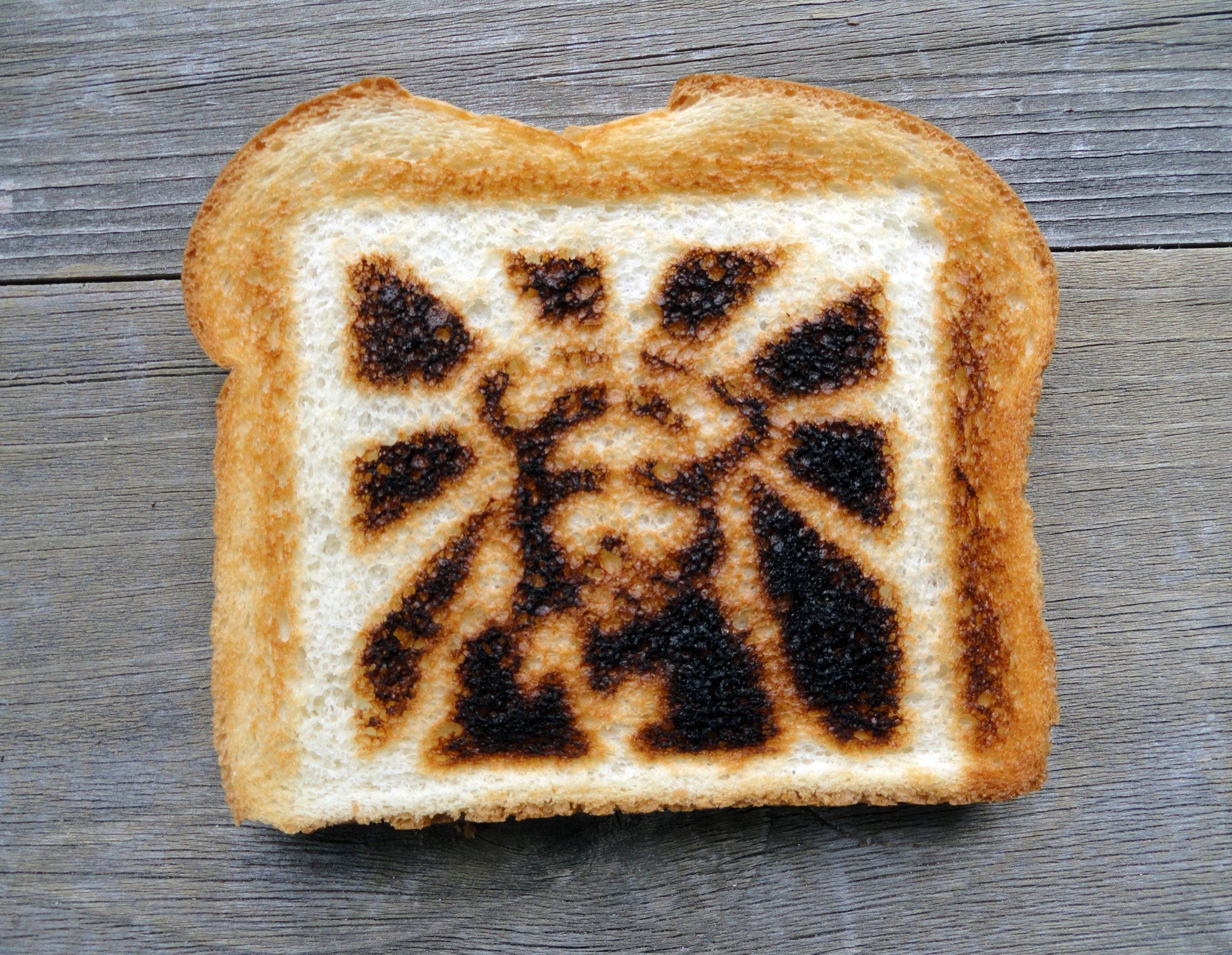Pareidolia: Scientists say 'don't worry, it's normal to see Jesus on a slice of toast'

Whether glimpsing the blessed Mary in a grilled cheese or eyeing up Nebuchadnezzar in a freshly crisped bagel, we all know that Americans are constantly beset by visions of biblical figures in toasted food products.
Now, however, scientists say they’ve shed more light on how this happens in the first place.
The phenomenon is known as facial pareidolia (pronounced pari-DOH-lee-a) and is a subset as apophenia – a general term that describes our tendency to see patterns in even random data. From shapes in clouds to monsters in shadows we’re all familiar with this experience, but the neural mechanisms underpinning are still mostly a mystery.
Now, a new study undertaken by Canadian and Chinese researchers has added further evidence to the theory that we just can’t help seeing faces in random data: we’re hard-wired to recognise human faces.
Using fMRI scanners to monitor brain activity in volunteers, neuroscientists identified the portions of the brain that consistently lit up when glimpsing facial stimuli. The research, published in the April issue of the journal cortex, identified the fusiform face area or FFA as key to this response.
It’s l long been known that the FFA is involved in recognizing faces, and some studies have also suggested that it helps us identify any sort of fine distinctions, from different letters to recognizing someone’s gender at a distance.
“Most people think you have to be mentally abnormal to see these types of images, so individuals reporting this phenomenon are often ridiculed,” said lead researcher Professor Kang Lee from the University of Toronto.
“But our findings suggest it’s common for people to see non-existent features because human brains are uniquely wired to recognise faces, so that even when there’s only a slight suggestion of facial features the brain automatically interprets it as a face.”
The research is in line with previous studies on the subject, and adds evidence to the theory that facial pareidolia emerged from an evolutionary need to recognize other friends – and foes – in a pinch. Doing so could have meant the difference between life and death tens of thousands of years ago, and modern humans seem to have just hung on to the skill.
Writing in his 1995 book The Demon-Haunted World, Carl Sagan theorized that “As soon as the infant can see, it recognizes faces, and we now know that this skill is hardwired in our brains. Those infants who a million years ago were unable to recognize a face smiled back less, were less likely to win the hearts of their parents, and less likely to prosper."
For more pictures of Pareidolia see the Faces in Things Twitter account and the Pareidolia sub-Reddit
Join our commenting forum
Join thought-provoking conversations, follow other Independent readers and see their replies
Comments